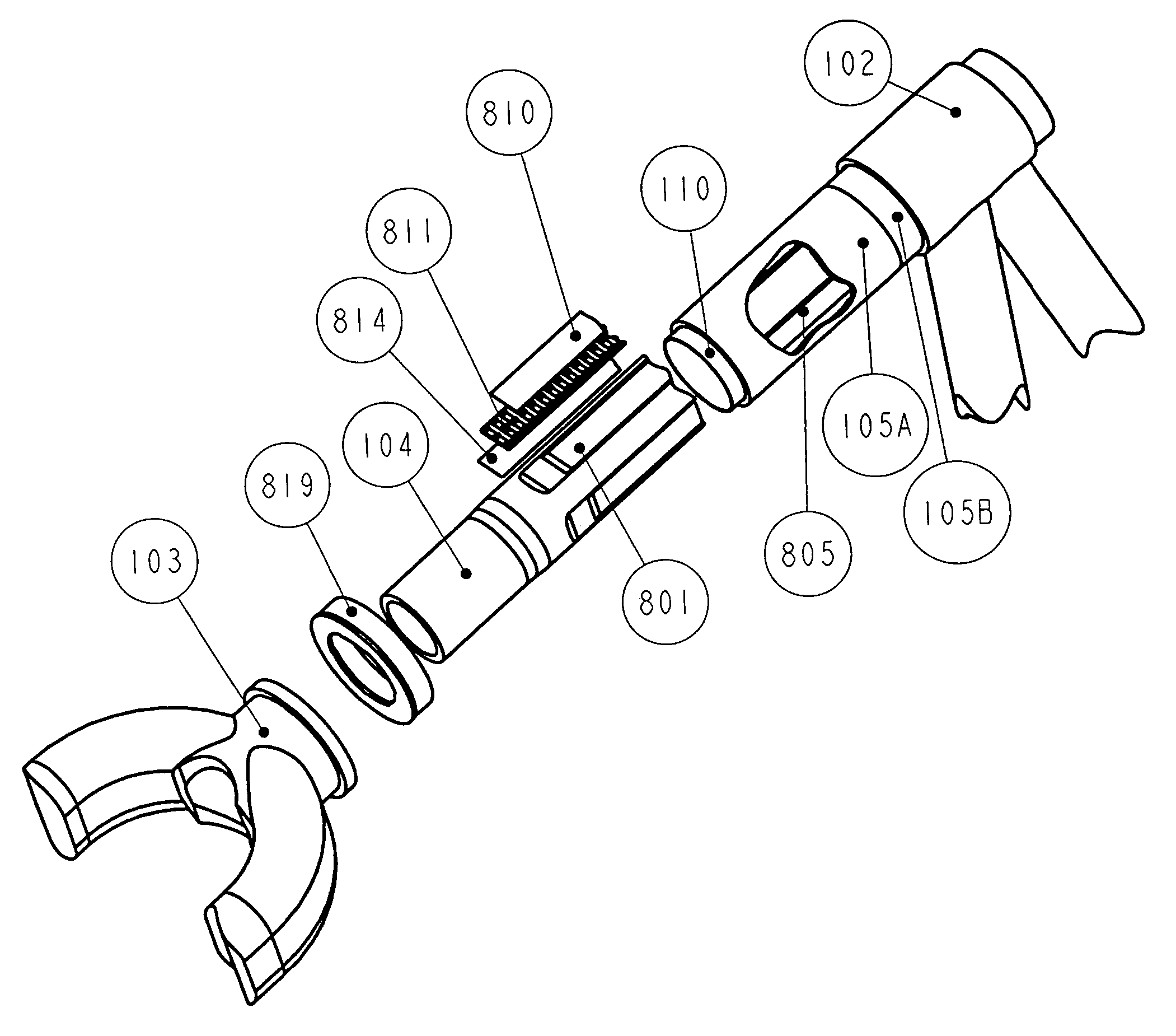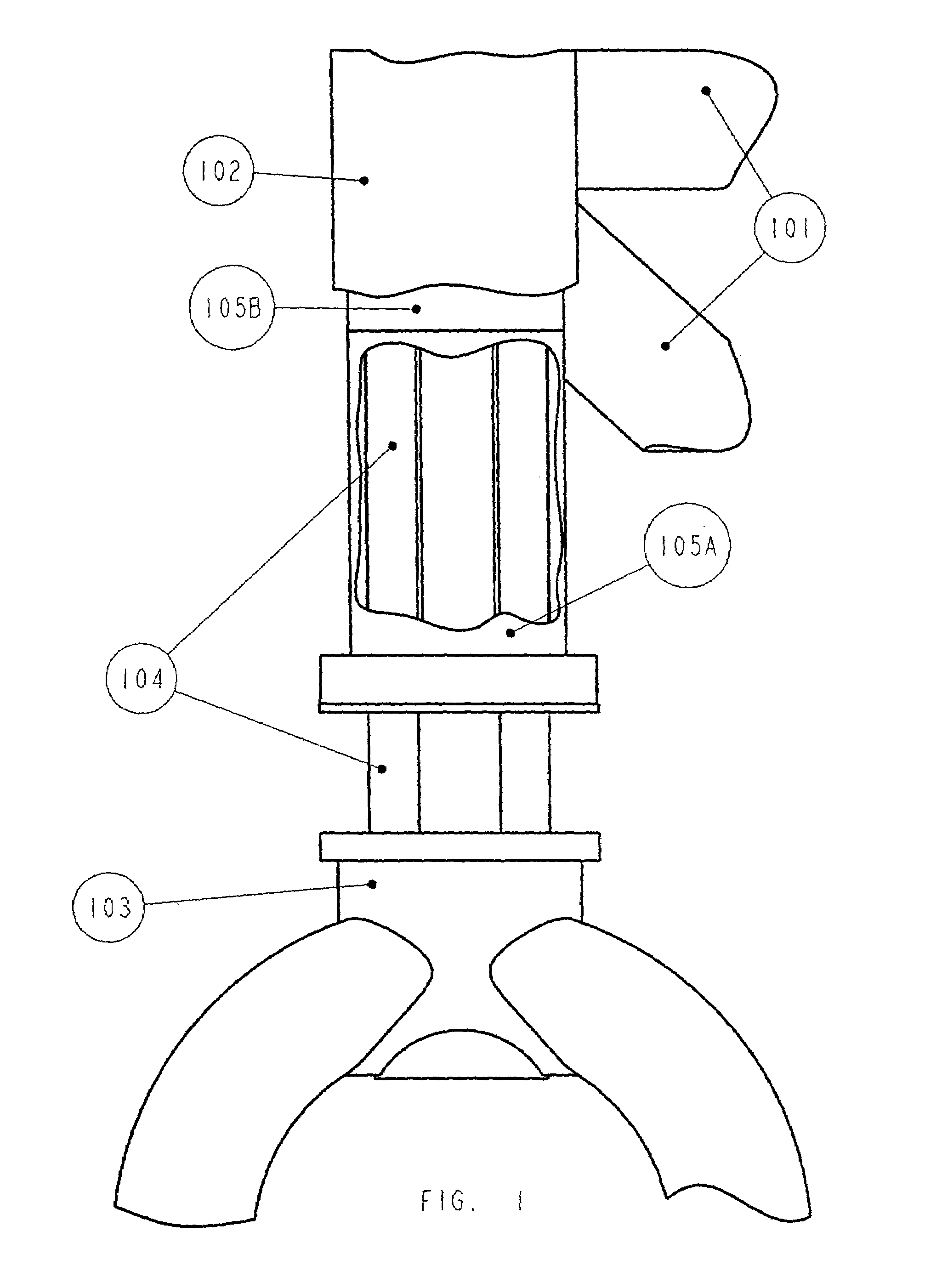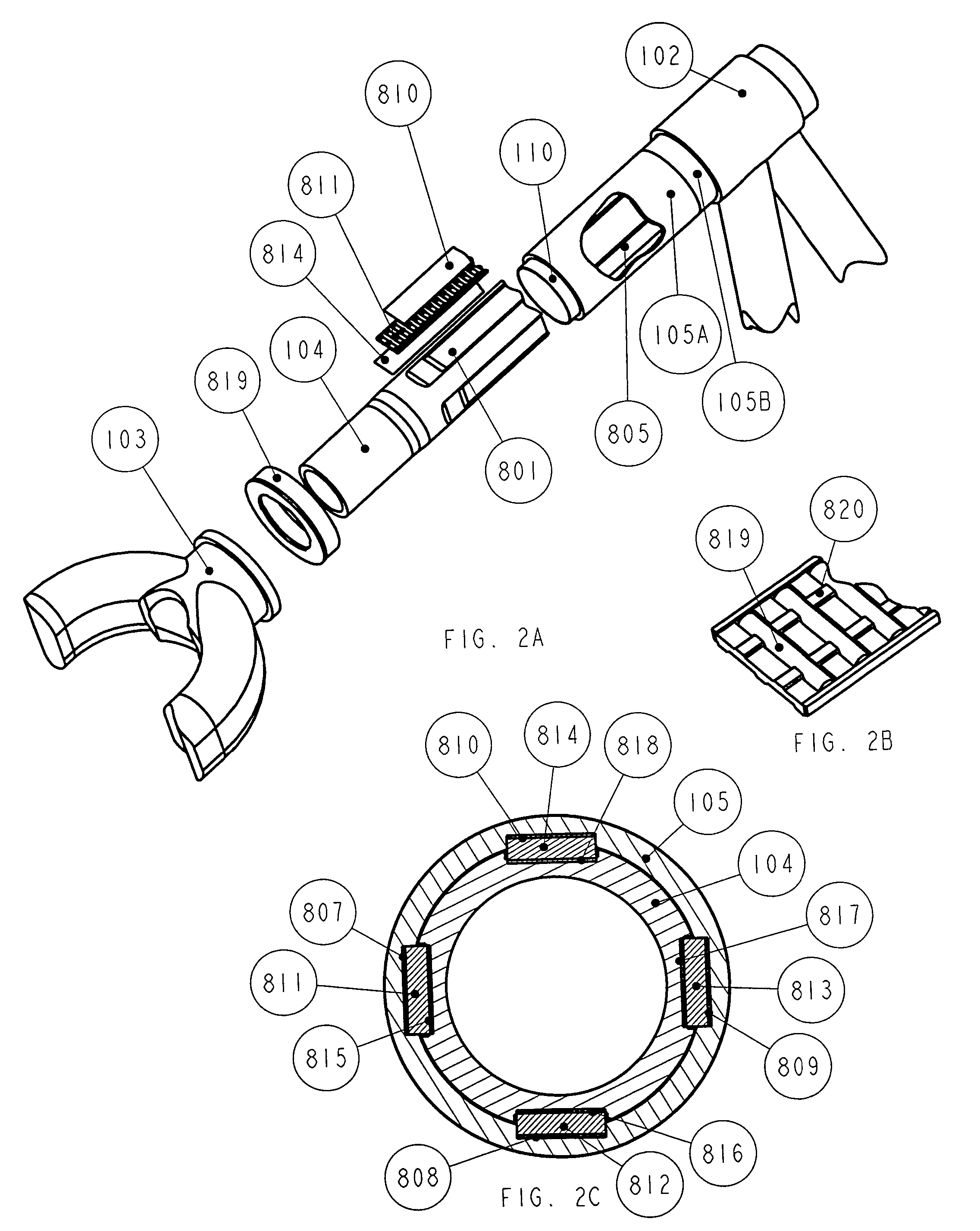Adjustable length suspension fork for a bicycle
a suspension fork and adjustable technology, applied in the direction of shock absorbers, steering devices, cycle equipments, etc., can solve the problems of unsatisfactory static friction, limited torsional stiffness of these types of assemblies, and suspension systems using such bushings tend to stick and release, so as to shorten the needed length of tubes, improve the strength characteristics of the suspension fork and improve the ride attitude
- Summary
- Abstract
- Description
- Claims
- Application Information
AI Technical Summary
Problems solved by technology
Method used
Image
Examples
Embodiment Construction
Telescoping Housing Mechanism
[0039]FIG. 1 shows a bicycle frame (partial) 101 along with a head tube 102. A fork crown (partial) 103 has an inner tube 104 of a telescoping assembly affixed into it. The outer tube, comprised of two pieces 105A and 105B of the telescoping assembly is pressed into the head tube 102 using upper and lower journal bearings (not shown) to allow for steering rotation. The upper end of the outer tube 105B is connected to the handlebar stem (not shown). It should be noted that for this embodiment the outer tube is comprised of two pieces, however, the outer tube could be one piece.
[0040]FIG. 2A is an exploded view of the telescoping assembly showing parts germane to this invention. Over a specific length in the outer wall of the inner tube 104 depicts a plurality of axially extending longitudinal flat surfaces or flats of which one is shown 801. In the preferred embodiment there are four such flats, however there can be more or less flats used. Over a specifi...
PUM
 Login to View More
Login to View More Abstract
Description
Claims
Application Information
 Login to View More
Login to View More - R&D
- Intellectual Property
- Life Sciences
- Materials
- Tech Scout
- Unparalleled Data Quality
- Higher Quality Content
- 60% Fewer Hallucinations
Browse by: Latest US Patents, China's latest patents, Technical Efficacy Thesaurus, Application Domain, Technology Topic, Popular Technical Reports.
© 2025 PatSnap. All rights reserved.Legal|Privacy policy|Modern Slavery Act Transparency Statement|Sitemap|About US| Contact US: help@patsnap.com



